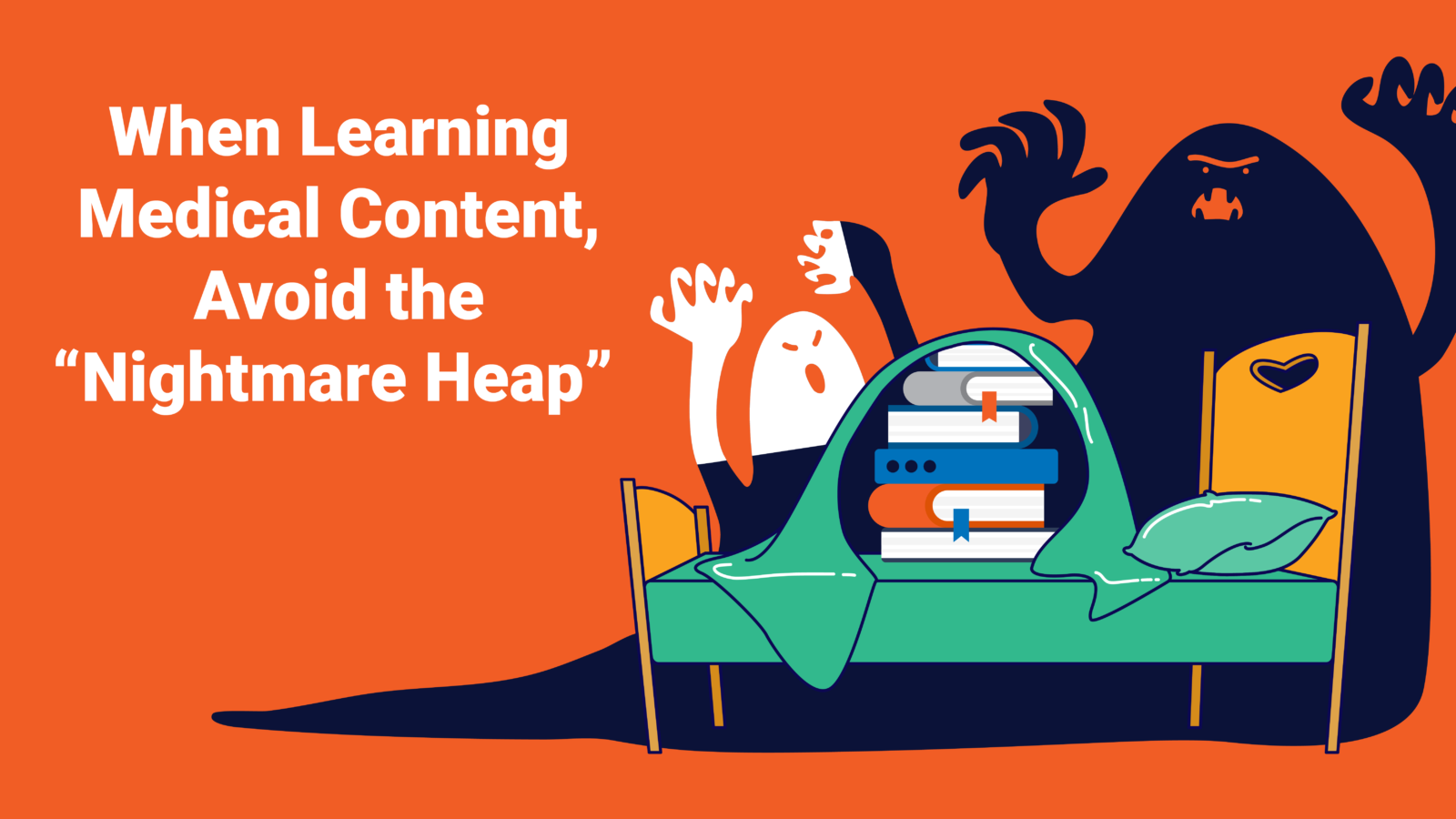How building a framework can benefit your studying

By David LaSalle, STATMed Learning Instructor
When learning medical content, it’s important to remember that recall really has two parts: storing information (encoding), and then being able to find it when we need it (retrieval). This strategy will help you do both.
My wife and I have a little game we play. She gives me a first name of a person, and then tells me a main dish, a side, a dessert, and a beverage that that person enjoys. Then she’ll give me another person and their preferences, and so on. After five of these, I’ll recall as many as I can and recite them back to her. I don’t mean to brag — but I’m about to brag — I’m pretty good at it. It’s hard, but enjoyably hard.
Recently, I had her change up the format. Instead of each person having four preferences, I just had to remember a list of 20 food items and 5 first names all in randomized order. Same number of items, same type of items. Turns out, I am terrible at this!
Why is the first task so much easier? Because there is a Framework for learning and remembering the material. I can link that content together because there are categories built into the material. I can build a little shelf in my memory storage system for each person’s preferences, and then house that content there. On the other hand, when I get 20 items all jumbled together, instead of having a neat and tidy five items per shelf, I end up with a messy pile of junk on the floor of my memory warehouse.
But, you might notice, there is still organization hidden in the list of randomized items: there are still 5 names, 5 entrees, 5 sides, 5 desserts and 5 drinks. Good observation! If, instead of jumping in and trying to learn a jumbled mass of details, I took just a moment or two to notice that implicit organization, then I could start building shelves and make my memory task much easier.
Okay, how does this apply to you and to learning medical content? So many learners (through no fault of their own, but because of the pace at which material is introduced and the volume and density of that material) jump right into memorizing discrete facts without doing the work of identifying the implicit organization in the material. This makes recalling information so much more difficult! Recall really has two parts: storing information (encoding), and then being able to find it when we need it (retrieval). When everything is on a neatly labeled shelf, it’s easy to find. When everything is in a nightmare heap, finding what we need can be impossible.
Some of the material you will working with will be clearly organized and the implicit categories will be easy to find. Other material may pose a real organizational headache, and finding that organization may be trickier. Either way, doing the work of finding that Framework makes both understanding and retention easier and more effective.
This can be something you teach yourself, or you can take our STATMed Class, where we teach our specific form of framework-finding for any format, from class-based PowerPoint lectures to dense boards-based review materials. Regardless, keep in mind, learning should start with finding structure first!
Interested in learning more about frameworking? Check out Drinking from the Firehose — How Two Students Learned to Overcome Information Overload and Keep Up in Med School
To learn more studying and test-taking strategies, check out the STATMed Study Skills Class!
